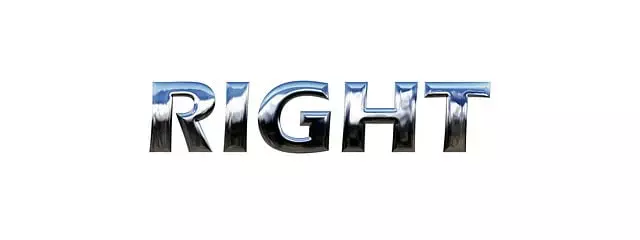Selecting the ideal business insurance requires a comprehensive understanding of your operation's unique risks and vulnerabilities. This involves assessing industry regulations, potential liabilities, asset values, and specific needs like merchandise loss or worker injury protection. By identifying these factors, you can choose from options such as general liability, property, professional liability, and workers' compensation to ensure optimal risk management for your business's longevity.
Choosing the right business insurance is crucial for safeguarding your investment and protecting against unforeseen risks. This comprehensive guide provides essential tips to help you navigate this process effectively. From understanding your unique business needs to evaluating coverage limits and regularly reviewing policies, each step ensures you select the most suitable insurance. Discover how to identify potential hazards, research different types of coverage, compare providers, and stay updated for a robust risk management strategy. Learn these secrets to choosing the perfect business insurance.
Understanding Your Business Needs

When it comes to choosing business coverage, the first step is understanding your business needs. How to Choose the Right Business Insurance involves assessing the unique risks and vulnerabilities specific to your operation. Consider factors such as industry regulations, potential liabilities, and the value of your assets. For instance, a retail store might require coverage for merchandise loss, while a construction company may need protection against worker injuries and site damage.
Identifying these needs is crucial as it guides you in selecting appropriate insurance policies. Different types of business coverage exist, including general liability, property insurance, professional liability, workers’ compensation, and more. Each serves a distinct purpose, so mapping out your requirements ensures that you’re not over- or under-insuring certain aspects of your business. This strategic approach enhances risk management, providing the right kind of protection for your company’s longevity.
Identifying Potential Risks and Hazards

When considering how to choose the right business insurance, the first step is to thoroughly identify potential risks and hazards that your business faces on a daily or seasonal basis. This process involves a critical evaluation of your operations, premises, equipment, and even your industry’s common risks. For instance, if you operate a construction company, you might face risks related to workplace accidents, property damage during construction projects, and liability for third-party injuries. Conversely, a tech startup may need to worry about data breaches, cyberattacks, or intellectual property theft.
By understanding these risks, business owners can make informed decisions when selecting insurance coverage. This includes deciding on the types of insurance needed (e.g., general liability, professional liability, property insurance), the limits of coverage, and the deductibles that best align with their risk tolerance and financial situation. Such proactive measures not only safeguard against unforeseen events but also demonstrate responsible business management practices.
Researching Different Types of Business Insurance

When considering business coverage, understanding various types of insurance is crucial for making an informed decision. The first step in choosing the right business insurance is to research and identify the specific risks your business faces. Different businesses have distinct needs; a retail store might require inventory coverage, while a tech startup could demand protection for intellectual property. Knowing these unique aspects will help guide your selection process.
Explore different options such as general liability insurance, which protects against common risks like customer injuries or property damage, and professional liability (also known as errors and omissions) insurance, which covers mistakes or negligence in services provided. Additionally, consider specialized policies tailored to industries like healthcare or construction, addressing their unique challenges. This comprehensive approach ensures you select coverage that aligns precisely with your business’s needs, enhancing risk mitigation and peace of mind.
Comparing Policies and Providers

When exploring how to choose the right business insurance, one of the most effective strategies is to thoroughly compare policies and providers. Begin by identifying your specific business needs and risks; different types of coverage cater to various sectors and operations. Next, evaluate each policy’s scope, deductibles, and exclusions to ensure they align with these requirements.
Consider getting quotes from multiple insurers to gain a comprehensive view of the market. Compare not just premiums but also the quality of service, claims processes, and customer reviews. This meticulous approach will help you discern which provider offers the most suitable and comprehensive protection for your business, ultimately safeguarding against unforeseen circumstances.
Evaluating Coverage Limits and Deductibles

When evaluating business coverage, understanding coverage limits and deductibles is crucial for making an informed decision on how to choose the right insurance. These elements significantly impact your financial protection and risk management strategy. Coverage limits refer to the maximum amount of compensation or reimbursement your insurance provider will offer in case of a claim. It’s important to assess these limits based on your business needs, considering potential risks and liabilities. For instance, if your business faces high-value claims for property damage or personal injury, ensuring adequate coverage limits is essential.
Deductibles, on the other hand, represent the amount you’ll pay out of pocket before insurance kicks in. Higher deductibles typically lead to lower premiums but could mean more financial burden during a claim. It’s a balancing act; carefully consider your cash flow and risk tolerance when setting deductibles. For smaller businesses with manageable risks, slightly higher deductibles might be feasible. However, for operations with significant potential losses, keeping deductibles reasonable is vital to avoid unexpected financial strain.
Regularly Review and Update Your Policy

Choosing the right business insurance is a crucial step in protecting your investment and ensuring continuity. However, it’s not enough to select a policy and forget about it. Regularly reviewing and updating your policy is an essential part of how to choose the right business insurance. This involves assessing changes in your business operations, market trends, and regulatory environments. For instance, expanding your product line or opening new branches requires adjustments to your coverage to reflect these changes.
Additionally, staying abreast of emerging risks specific to your industry is vital. By conducting periodic policy audits, you can identify gaps and ensure that your insurance keeps pace with the evolving needs of your business. This proactive approach not only helps in managing potential liabilities but also demonstrates responsible stewardship as a business owner.



